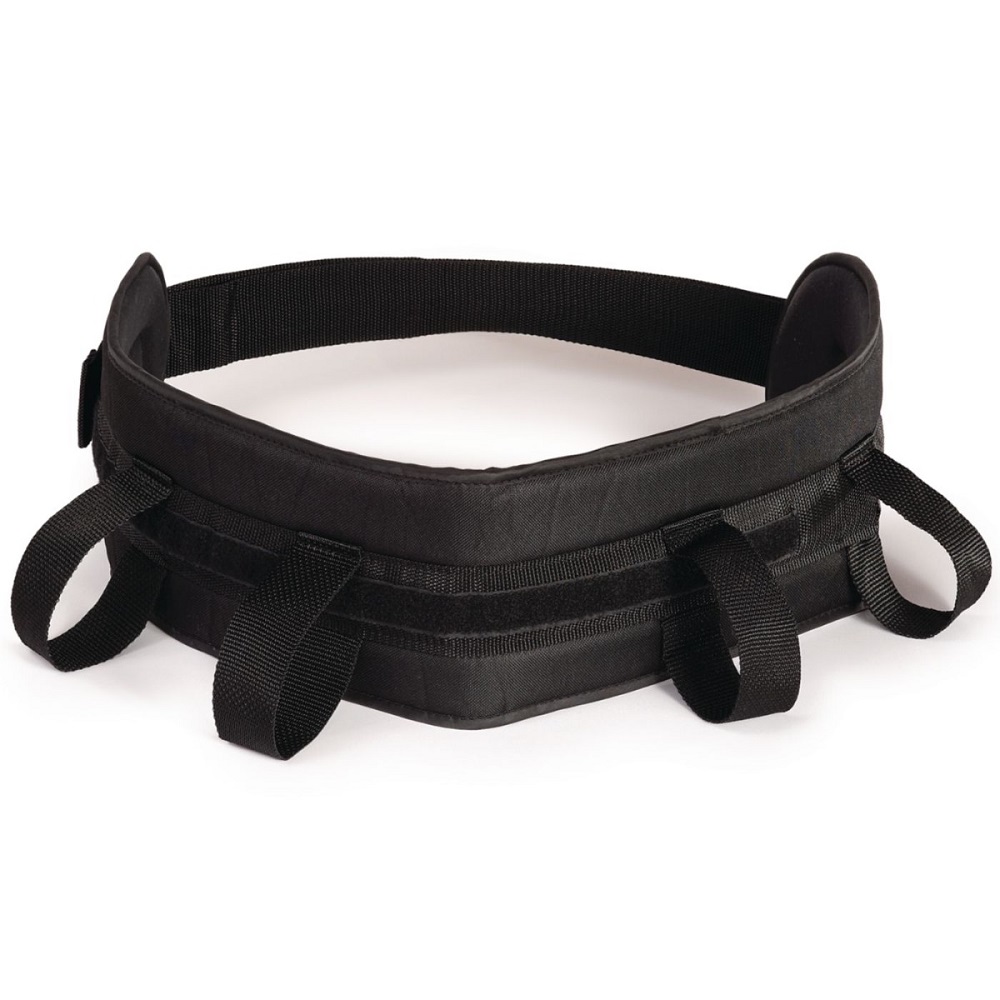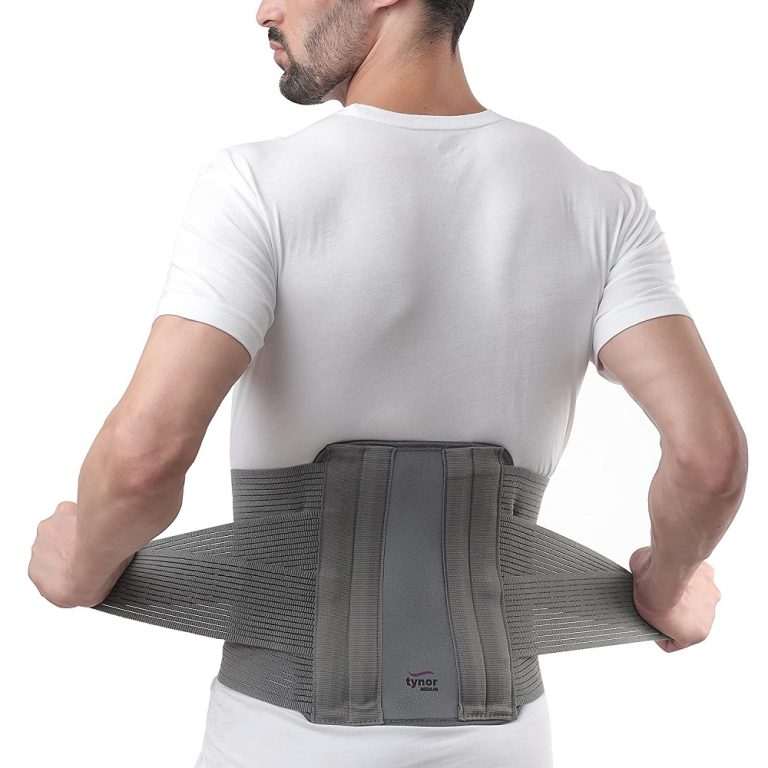A gait belt is an essential tool used primarily in healthcare settings to assist individuals with mobility needs. Whether for physical therapy, rehabilitation, or assisting elderly patients, gait belts enhance safety and support during mobility activities. Understanding how to properly use and adjust a gait belt is crucial for both caregivers and patients. This article will explore the purpose of gait belt, their proper use, how to adjust them, and tips for ensuring maximum safety.
Understanding the Purpose of a Gait Belt
What Is a Gait Belt?
A gait belt, also known as a transfer belt, is a sturdy strap made of cotton, nylon, or polyester. It typically features a secure buckle or fastening mechanism. The belt is designed to be worn around a patient’s waist, allowing caregivers to provide support during walking or transferring from one position to another.
Adjustable in size, gait belts can accommodate various body types and shapes. They are instrumental in assisting patients who may have difficulty maintaining balance or strength. Caregivers use gait belts to provide stability, helping individuals avoid falls or injuries during mobility-related activities.
Importance in Rehabilitation
Gait belts play a significant role in rehabilitation settings. They are particularly beneficial for individuals recovering from surgery, injury, or illness that affects mobility. The belt provides both security and confidence for patients as they work on regaining strength and balance.
When properly used, gait belts can reduce strain on caregivers’ bodies by allowing them to use their strength more efficiently while assisting patients. This benefit is crucial in preventing back injuries or strains among caregivers.

How to Use a Gait Belt
Proper Placement of the Gait Belt
To use a gait belt correctly, start by ensuring that the belt is the appropriate size for the individual. The belt should fit snugly around the waist but allow enough room for comfortable movement. Before putting the belt on, check for any signs of damage, such as fraying or worn edges, to ensure safety.
To place the gait belt, have the patient stand up if possible. Otherwise, assist them in a seated or stable position. Wrap the belt around their waist, positioning it just above the hips for optimal support. The belt should not be placed directly over the abdomen, as this can cause discomfort or restrict movement.
Securing the Gait Belt
After positioning the gait belt correctly, secure it using the buckle or fastening mechanism. Ensure it is tightly fastened but not so tight that it restricts circulation or causes pain. A good rule of thumb is to be able to slide your hand between the belt and the patient’s waist without too much resistance.
Once secured, double-check the fit and make any necessary adjustments. The belt should provide stability without being cumbersome.

Adjusting the Belt for Safety
Ensuring Proper Tension
The key to maximizing safety when using a gait belt lies in proper tension. After securing the gait belt, it should be tight enough to provide support but not so tight that it causes discomfort. Caregivers should assess the patient’s comfort level, ensuring that the individual feels secure without experiencing pain or restriction.
To check the tension, gently pull on the belt. There should be some resistance, indicating that it is properly secured. The goal is to find the right balance that provides support without compromising comfort. Regularly check the fit if the patient moves during the activity.
Adapting for Different Activities
Different activities may require slightly different adjustments to the gait belt. For example, if the patient is transitioning from sitting to standing, the belt may need to be positioned higher on the waist for better leverage. When walking, the belt should remain at the hips where it provides the most support.
It’s essential for caregivers to be attentive and adaptable. Depending on the activity and the patient’s needs, you may find that additional adjustments are necessary. Always adjust the gait belt according to the situation starting with ensuring maximum safety.

Assisting with Mobility Using a Belt
Supporting During Transfers
When using a gait belt during transfers, the caregiver should always stand directly in front or beside the patient. This placement provides the best support and allows for easy communication. Before assisting the patient, explain each step of the process. Communication is key in fostering trust and reducing anxiety.
To assist the patient in standing, place one hand on the belt while the other can support their elbow or provide guidance at their back. Encourage the patient to lean forward slightly while standing up. This technique gives them a sense of security and prepares them for the transition.
Facilitating Safe Walking
Once the patient is upright, the caregiver can guide them in walking. Use the gait belt to provide gentle guidance, not pulling them forward too forcefully. The goal is to support the patient while allowing them to maintain as much independence as possible.
As they walk, keep a close eye on their balance and stability. If at any point the patient seems unsteady, provide additional support. Always be prepared to assist them in regaining their balance if they falter. Your role as a caregiver is to be proactive, ensuring safety throughout the process.

Situational Awareness and Communication
Maintaining Situational Awareness
Using a gait belt involves more than just securing it around a patient’s waist. Caregivers must maintain situational awareness at all times. Being attentive to the surroundings can prevent accidents or hazards. Watch for obstacles on the ground, such as furniture or uneven surfaces, which can pose risks during the transfer or walking process.
Additionally, constantly observe the patient’s physical condition and emotional state. Some patients may feel anxious or fatigued during mobility activities. Being aware of these signs will allow caregivers to adjust their approach as needed.Engagement with the patient fosters a sense of reassurance, making the experience smoother for everyone involved.
Importance of Clear Communication
Effective communication is vital when using a gait belt. Caregivers should always inform patients about upcoming movements, whether standing, walking, or changing positions. Use clear, simple language and make sure the patient understands what to expect. This strategy can significantly reduce anxiety and build trust between the caregiver and patient.
Encouraging feedback is also essential. Ask the patient how they feel during the process and whether they need adjustments in support or comfort. This interaction empowers the patient, giving them a sense of control over their mobility experience.
Common Mistakes to Avoid
Using the Gait Belt Incorrectly
Several common mistakes can undermine the effectiveness of a gait belt and compromise safety. One mistake is using the belt too loosely, which can prevent it from providing adequate support. Conversely, using the belt too tightly can be uncomfortable, leading to issues such as restricted blood flow.
Another common mistake is failing to adjust the gait belt for different activities. Each activity may require unique support, and caregivers must be adaptable in their approach. Not accounting for the patient’s changing needs can increase the risk of falls or discomfort.
Neglecting Proper Training
Caregivers should always receive proper training on how to use a gait belt effectively. Relying solely on intuition or past experiences can lead to unsafe practices. Training programs often provide valuable insights on techniques and best practices.
Additionally, caregivers should refresh their knowledge regularly to stay updated on safety protocols and new research. Attending workshops or reviewing educational materials can enhance one’s confidence while using a gait belt.

Final Tips for Safe Use of Gait Belts
Establish a Routine
Creating a consistent routine for using gait belts can enhance safety and efficiency. Establishing protocols for when and how to use the belt ensures that caregivers and patients understand what to expect. Regular use leads to familiarity, benefiting both the caregiver and the individual.
Make sure to assess the environment in which the gait belt will be used. Clear cluttered areas, and ensure the patient’s path is free from obstacles. This preparation minimizes risks and creates a safer space for movement.
Regular Equipment Checks
Regularly inspect the gait belt for signs of wear and tear. Frayed edges, loose buckles, or damaged fabric can compromise the safety of the accessory. Conduct these inspections before each use to ensure safety standards are met.
Should any issues be identified, replace the gait belt immediately. Using damaged equipment only increases the risk of injury. Establish a routine for maintaining all mobility equipment to promote long-term safety in the care environment.
Emphasizing Safety in Mobility Assistance
In conclusion, gait belts are invaluable tools for assisting individuals with mobility needs. Understanding how to properly use and adjust a gait belt ensures maximum safety for both caregivers and patients. From proper placement to ongoing communication, every step is essential for fostering a secure mobility experience.
By following best practices, caregivers can facilitate greater independence for patients while minimizing risks of injury. The effectiveness of a gait belt extends beyond mere function; it signifies a commitment to safety in care. With the right knowledge and approach, caregivers can provide enhanced support, promoting the well-being of those they assist.










